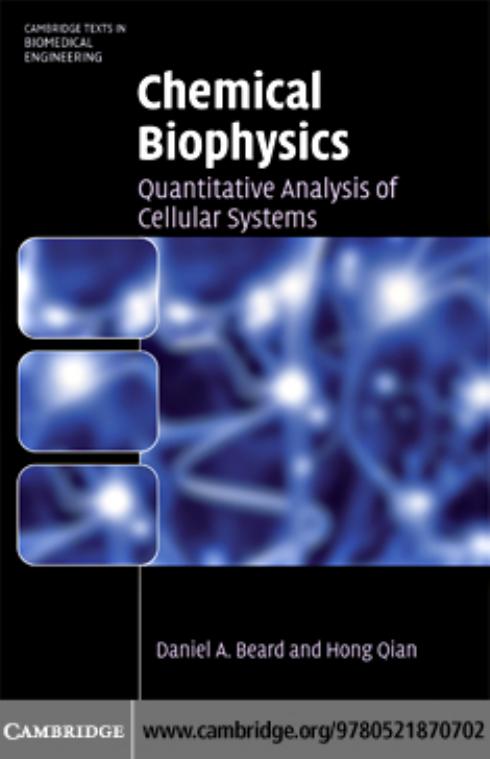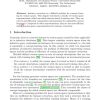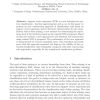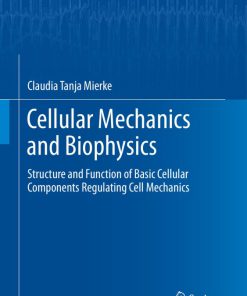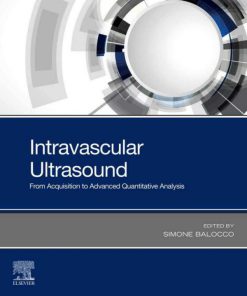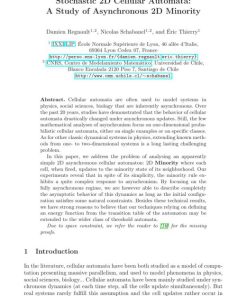Chemical Biophysics Quantitative Analysis of Cellular Systems 1st Edition by Daniel Beard, Hong Qian 0521870704 9780521870702
$50.00 Original price was: $50.00.$25.00Current price is: $25.00.
Authors:Daniel A. Beard; Hong Qian , Series:Science [9] , Tags:Technology & Engineering; Engineering (General); Science; Life Sciences; Biophysics; Chemical & Biochemical; Molecular Biology; Biochemistry , Author sort:Beard, Daniel A. & Qian, Hong , Ids:Google; 9780521158244 , Languages:Languages:eng , Published:Published:Nov 2010 , Publisher:CAMBRIDGE UNIVERSITY PRESS , Comments:Comments:Chemical Biophysics provides an engineering-based approach to biochemical system analysis for graduate-level courses on systems biology, computational bioengineering and molecular biophysics. It is the first textbook to apply rigorous physical chemistry principles to mathematical and computational modeling of biochemical systems for an interdisciplinary audience. The book is structured to show the student the basic biophysical concepts before applying this theory to computational modeling and analysis, building up to advanced topics and research. Topics explored include the kinetics of nonequilibrium open biological systems, enzyme mediated reactions, metabolic networks, biological transport processes, large-scale biochemical networks and stochastic processes in biochemical systems. End-of-chapter exercises range from confidence-building calculations to computational simulation projects.
Chemical Biophysics Quantitative Analysis of Cellular Systems 1st Edition by Daniel Beard, Hong Qian – Ebook PDF Instant Download/Delivery. 0521870704, 9780521870702
Full download Chemical Biophysics Quantitative Analysis of Cellular Systems 1st Edition after payment
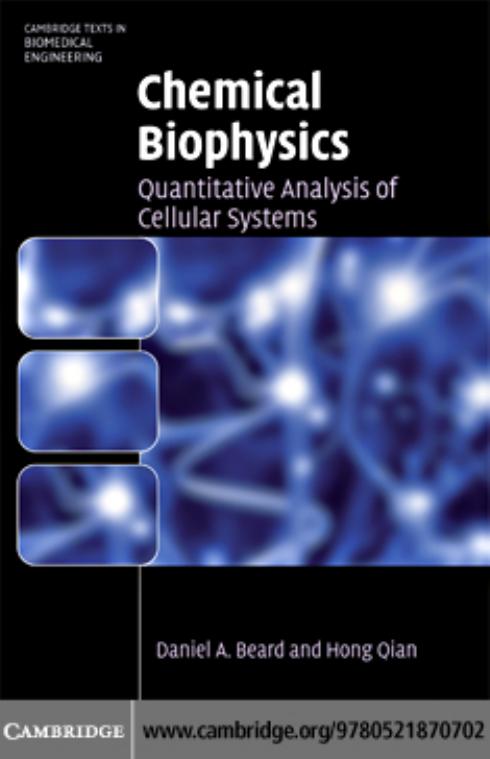
Product details:
ISBN 10: 0521870704
ISBN 13: 9780521870702
Author: Daniel A. Beard; Hong Qian
Chemical Biophysics provides an engineering-based approach to biochemical system analysis for graduate-level courses on systems biology, computational bioengineering and molecular biophysics. It is the first textbook to apply rigorous physical chemistry principles to mathematical and computational modeling of biochemical systems for an interdisciplinary audience. The book is structured to show the student the basic biophysical concepts before applying this theory to computational modeling and analysis, building up to advanced topics and research. Topics explored include the kinetics of nonequilibrium open biological systems, enzyme mediated reactions, metabolic networks, biological transport processes, large-scale biochemical networks and stochastic processes in biochemical systems. End-of-chapter exercises range from confidence-building calculations to computational simulation projects.
Chemical Biophysics Quantitative Analysis of Cellular Systems 1st Table of contents:
Part I Background material
1 Concepts from physical chemistry
Overview
1.1 Macroscopic thermodynamics
1.2 Isolated systems and the Boltzmann definition of entropy
1.3 Closed isothermal systems
1.3.1 Helmholtz free energy
1.3.2 Entropy in an NVT system
1.3.3 Interpretation of temperature in the NVT system
1.4 Isothermal isobaric systems
1.4.1 Gibbs free energy
1.4.2 Entropy in an NPT system
1.5 Thermodynamic driving forces in different systems
1.6 Applications and conventions in chemical thermodynamics
1.6.1 Systems of non-interacting molecules
1.6.2 Gibbs free energy of chemical reactions and chemical equilibrium
1.7 Applications of thermodynamics in biology
1.7.1 Enzyme reaction mechanisms
1.7.2 Electrostatic potential across a cell membrane
Concluding remarks
Exercises
2 Conventions and calculations for biochemical systems
Overview
2.1 Conventional notation in biochemical thermodynamics
2.2 Reactants and reactions in biochemistry
2.2.1 An example of a biochemical reactant
2.2.2 An example of a biochemical reaction
2.3 Effects of pH and ion binding on biochemical reaction thermodynamics
2.4 Effects of temperature on biochemical reaction thermodynamics
2.5 Effects of ionic strength on biochemical reaction thermodynamics
2.6 Treatment of CO2 in biochemical reactions
2.7 pH variation in vivo
2.7.1 In vivo deviation from the standard state
2.7.2 The bicarbonate system in vivo
Concluding remarks
Exercises
3 Chemical kinetics and transport processes
3.1 Well mixed systems
Overview
3.1.1 Differential equations from mass conservation
3.1.2 Reaction thermodynamics revisited
3.1.3 Reaction kinetics
3.1.3.1 Mass action kinetics
3.1.3.2 Complex rate laws
3.1.3.3 Net flux for nearly irreversible reactions is proportional to reverse flux
3.1.4 Using computers to simulate chemical kinetics
3.1.4.1 Example: simulating Michaelis–Menten enzyme kinetics
3.1.4.2 Example: non-linear oscillations in glycolysis
3.2 Transport processes
3.2.1 Advection
3.2.2 Diffusion
3.2.3 Drift
3.2.3.1 Einstein relation relates molecular diffusivity and electrokinetic mobility
3.2.4 Example: passive permeation across a membrane
3.2.5 Example: coupled diffusion and drift in a membrane
Concluding remarks
Exercises
Part II Analysis and modeling of biochemical systems
4 Enzyme-catalyzed reactions
Overview
4.1 Simple Michaelis–Menten reactions revisited
4.1.1 Steady state enzyme turnover kinetics
4.1.2 Reversible Michaelis–Menten kinetics
4.1.3 Non-equilibrium steady states and cycle kinetics
4.2 Transient enzyme kinetics
4.2.1 Rapid pre-equilibrium
4.2.2 A singular perturbation approach to Michaelis–Menten kinetics
4.3 Enzyme with multiple binding sites: cooperativity
4.3.1 Sigmoidal equilibrium binding
4.3.2 Cooperativity in enzyme kinetics
4.3.3 The Hill coefficient
4.3.4 Delays and hysteresis in transient kinetics
4.4 Enzymatic fluxes with more complex kinetics
4.4.1 Reciprocal of flux: the mean time of turnover
4.4.2 The method of King and Altman
4.4.3 Enzyme-catalyzed bimolecular reactions
4.4.4 Example: enzyme kinetics of citrate synthase
Concluding remarks
Exercises
5 Biochemical signaling modules
5.1 Kinetic theory of the biochemical switch
5.1.1 The phosphorylation–dephosphorylation cycle
5.1.2 Zeroth-Order Ultrasensitivity
5.1.3 Substrate selectivity
5.1.4 The GTPase signaling module
5.1.5 Duration of switch activation and a biochemical timer
5.1.6 Synergistic action of kinases and phosphatases and the phosphorylation energy hypothesis
5.2 Biochemical regulatory oscillations
5.2.1 Gene regulatory networks and the repressilator
5.2.2 Biochemical oscillations in cell biology
Concluding remarks
Exercises
6 Biochemical reaction networks
6.1 Formal approach to biochemical reaction kinetics
6.1.1 Establishing the components of the biochemical network model
6.1.2 Determining expressions for biochemical fluxes for the reactions
6.1.3 Determining the differential equations
6.1.4 Computational implementation and testing
6.2 Kinetic model of the TCA cycle
6.2.1 Overview
6.2.2 Components of the TCA cycle reaction network
6.2.3 Flux expressions for TCA cycle reaction network
6.2.4 Differential equations for TCA cycle reaction network
6.2.5 Simulation of TCA cycle kinetics
6.3 Control and stability in biochemical networks
6.3.1 Linear analysis near a steady state
6.3.2 Metabolic control analysis
6.3.2.1 Elasticity coefficients
6.3.2.2 Control coefficients
6.3.2.3 Summation theorems
Concluding remarks
Exercises
7 Coupled biochemical systems and membrane transport
7.1 Transporters
7.1.1 Active versus passive transport
7.1.2 Examples: a uniporter and an antiporter
7.2 Transport of charged species across membranes
7.2.1 Thermodynamics of charged species transport
7.2.2 Electrogenic transporters
7.3 Electrophysiology modeling
7.3.1 Ion channels
7.3.2 Differential equations for membrane potential
7.3.3 The Hodgkin–Huxley model
7.4 Large-scale example: model of oxidative ATP synthesis
7.4.1 Model of oxidative phosphorylation
7.4.2 Model behavior
7.4.3 Applications to in vivo systems
Concluding remarks
Exercises
Part III Special topics
8 Spatially distributed systems and reaction–diffusion modeling
8.1 Diffusion-driven transport of solutes in cells and tissue
8.1.1 The diffusion equation: assumptions and applications
8.1.2 Oxygen transport to tissue and the Krogh–Erlang model
8.1.3 Facilitated diffusion
8.2 Advection–diffusion modeling of solute transport in tissues
8.2.1 Axially distributed models of blood–tissue exchange
8.2.2 Analysis of solute transport in organs
8.2.3 Whole-organ metabolic modeling
8.3 Three-dimensional modeling
Concluding remarks
Exercises
9 Constraint-based analysis of biochemical systems
9.1 Motivation for constraint-based modeling and analysis
9.2 Mass-balance constraints
9.2.1 Mathematical representation for flux balance analysis
9.2.2 Energy metabolism in E. coli
9.3 Thermodynamic constraints
9.3.1 The basic idea
9.3.2 Mathematical details
9.3.3 Feasible sign patterns
9.4 Further concepts in constraint-based analysis
9.4.1 Feasible concentrations from potentials
9.4.2 Biochemical conductance and enzyme activity
9.4.3 Conserved metabolite pools
9.4.4 Biological objective functions and optimization
9.4.5 Metabolic engineering
9.4.6 Incorporating metabolic control analysis
Concluding remarks
Exercises
10 Biomacromolecular structure and molecular association
10.1 Protein structures and -helices
10.1.1 The theory of helix-coil transition
10.2 Protein filaments and actin polymerization
10.2.1 Nucleation and critical monomer concentration
10.2.2 Theory of nucleation-elongation of actin polymerization
10.3 Macromolecular association
10.3.1 A combinatorial theory of macromolecular association
10.3.2 Statistical thermodynamics of association
10.4 A dynamics theory of association
10.4.1 Transition-state theory and rate constants
Concluding remarks
Exercises
11 Stochastic biochemical systems and the chemical master equation
11.1 A brief introduction to the chemical master equation
11.2 Essential materials from probability theory
11.2.1 The law of large numbers
11.2.2 Continuous time Markov chain
11.3 Unimolecular reaction networks
11.3.1 Rate equations for two-state conformational change
11.3.2 Michaelis–Menten kinetics of single enzymes
11.4 Non-linear biochemical reactions with fluctuations
11.4.1 Chemical master equation for Michaelis–Menten kinetics
11.4.2 A non-linear biochemical reaction system with concentration fluctuations
11.4.3 Bistability and non-equilibrium steady state
11.4.4 Stochastic simulation of the CME
11.5 The CME model for protein synthesis in a single cell
Concluding remarks
Exercises
12 Appendix: the statistical basis of thermodynamics
12.1 The NVE ensemble
12.2 The NVT ensemble
12.2.1 Boltzmann statistics and the canonical partition function: a derivation
12.2.2 Another derivation
12.2.3 One more derivation
12.2.4 Equipartition
12.3 The NPT ensemble
People also search for Chemical Biophysics Quantitative Analysis of Cellular Systems 1st:
what is quantitative chemical analysis
what are examples of quantitative analysis in chemistry
is quantitative analysis chemistry hard
chemical biophysics

